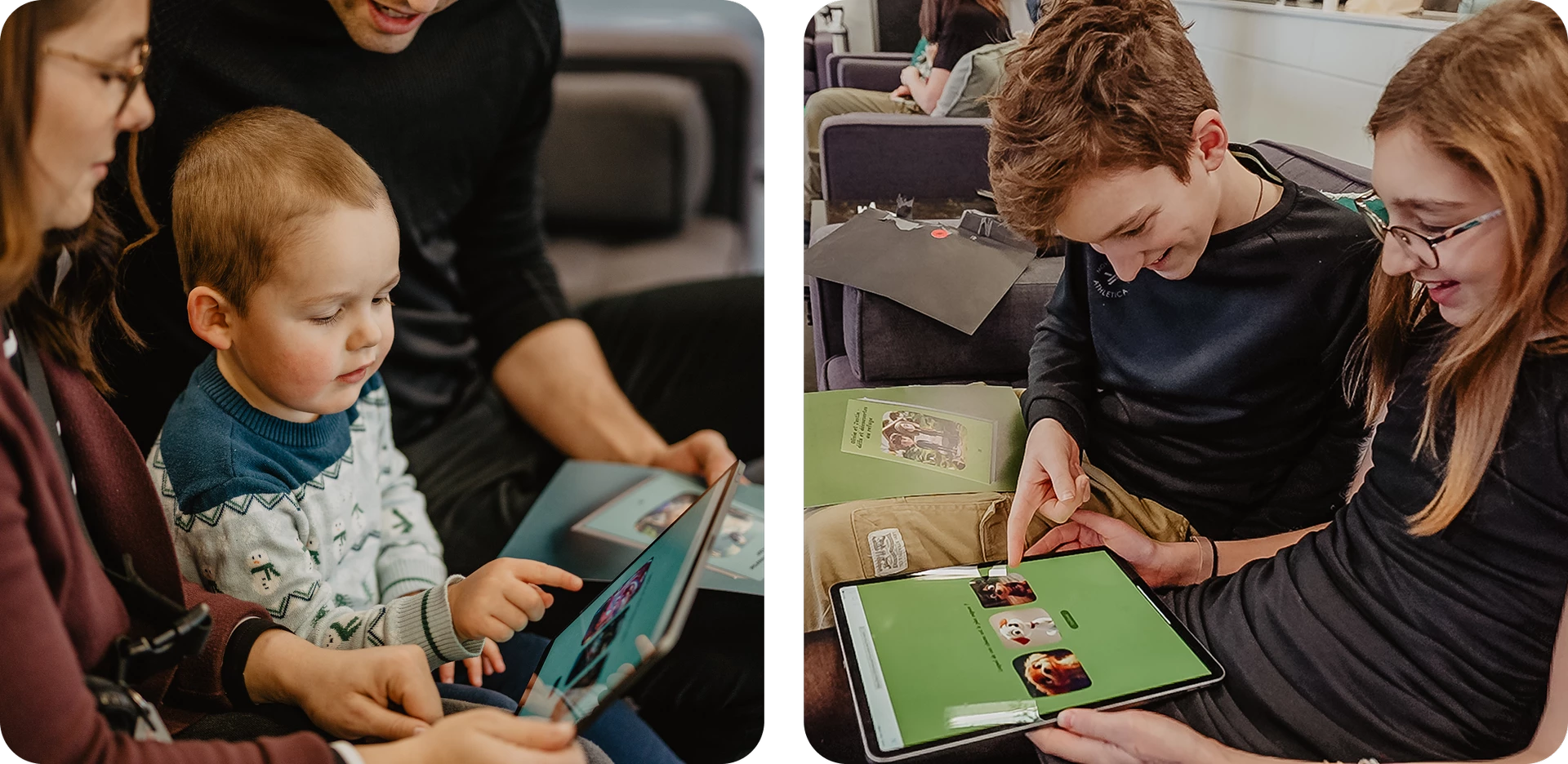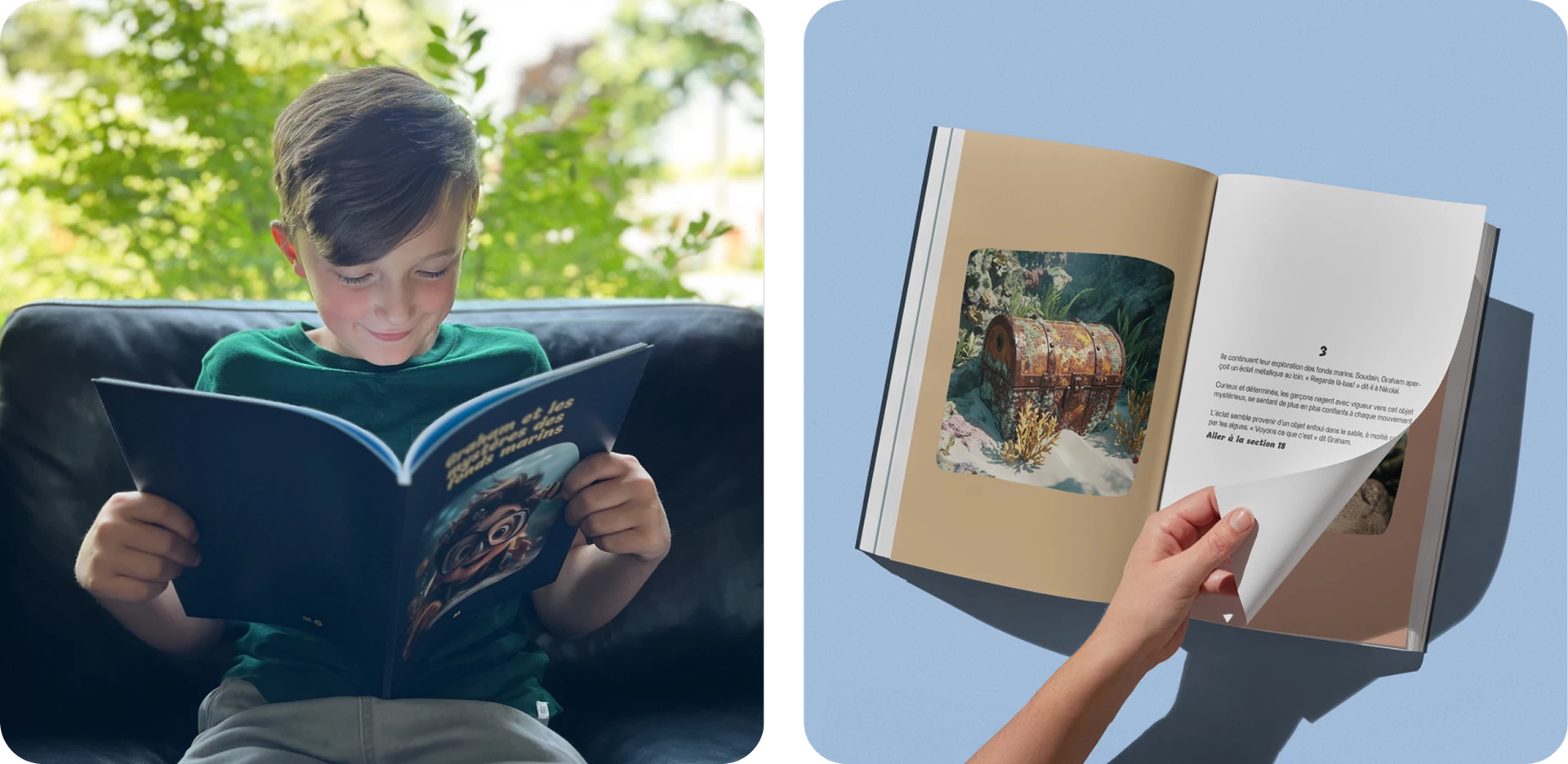At Mirego, we’ve cherished a special tradition for years: giving personalized year-end gifts to the children of our team members. This gesture, which embodies our human-centered approach to work, naturally extends beyond the workplace, bringing families into the community we’re building together.
This year, we decided to elevate this tradition into an innovation experiment. Our ambitious goal? To create 46 fully personalized interactive books, where each child becomes the hero of their very own "choose-your-own-adventure" story, tailored to their traits, interests, and personality.
Thus, the LIPPS project (Interactive Books Produced by Scout) was born, taking on the challenge of testing the current limits of content personalization using generative AI tools.
Our methodological approach
We began by collecting detailed information about each child: their features, current interests, fears they’re learning to face, and even the dynamics of their family. This served as the foundation for crafting personalized stories.

The process unfolded in structured phases. First, the AI developed narrative frameworks tailored to each child’s profile. Next, it generated cohesive illustrations to complement these branching stories. The challenge lay in weaving personalized elements into the narratives seamlessly, all while upholding a high standard of literary and visual quality. To achieve this, we established a constant review loop — every AI-generated output underwent meticulous refinement and validation by our team.
A complex technical challenge
Our journey into generative AI surfaced three key challenges that vividly illustrate the current technological limitations.
- Visual consistency quickly emerged as the first obstacle. Ensuring that a character's appearance remained consistent across multiple scenes was no small feat: the AI often altered physical traits between illustrations, introduced inconsistencies in clothing or accessories, and occasionally produced the notorious extra fingers. Addressing these issues required an iterative workflow with repeated generations and careful selection for every illustration.
- Directed creativity was another significant challenge. When left unguided, the AI displayed a strong tendency to place stories ✨in enchanted forests✨—a clear reflection of biases in its training data. Incorporating each child’s unique passions, crafting secondary characters that mirrored their family context, and maintaining a balance between personalization and narrative quality turned out to be far more intricate than we had anticipated.
- Finally, narrative complexity management in branching stories introduced additional complications. The AI often lost consistency between sections: brothers would suddenly transform into cousins, or a phobia would inexplicably shift to another character. To address these shortcomings, we adopted a segmented approach, focusing on one section at a time under continuous supervision to preserve global coherence.
Insights and future perspectives
This project served as a unique testing ground to explore what generative AI can currently achieve in large-scale personalization. The insights gained are both valuable and nuanced.
- Generative AI proved to be an exceptional creativity amplifier. It allowed for the creation of 46 uniquely tailored books within a timeframe that would have been impossible with traditional methods, albeit with the need for constant oversight. While the project took longer than anticipated, delivering 46 personalized interactive books would have simply been unfeasible without AI.
- The human element remains at the heart of generative AI. The project’s success was largely dependent on human involvement for curating the AI-generated content, ensuring narrative coherence, customizing details for each child, and performing meticulous quality control.

This experience reinforces our belief that AI’s future in business lies in collaboration, not replacement. By leveraging the complementary strengths of humans and AI, groundbreaking results can be achieved. The 46 children who now own their personalized books are living proof, and the overwhelmingly positive feedback from families validates the impact of this innovative initiative.
Discover a preview of the project’s results by consulting this example (available in French only).

